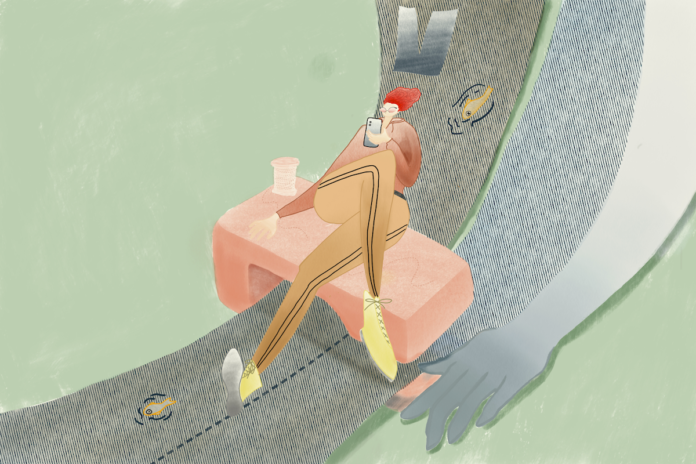As people start to become more conscious of their ecological footprint in the world, people are looking to find ways of making their lives more sustainable. Avoiding fast fashion is one of the ways that people can try to limit their impact on the ecosystem.
What is fast fashion?
Fast fashion was born after the Industrial Revolution. With the introduction of sewing machines, dressmaking could now be outsourced to stores instead of the home. This transition quickly created life-altering challenges for workers.
One of the first-ever major garment factory fires happened in 1911 at New York’s Triangle Shirtwaist building. Close to 150 workers lost their lives and the majority of those workers were immigrant women.
Fast fashion today has been described as cheap clothes inspired by high fashion—trendy items offered at ‘affordable’ prices for the everyday consumer. However, unsafe labour practices that plagued fashion factory workers in the early 20th century, including a lack of training, defective equipment or unreasonable work schedules and pay, still largely persist today.
The ‘fast’ part of fast fashion comes from the speed at which these clothes are produced, which can only be done through the use of sweatshops in developing countries providing cheap and poorly regulated labour.
What is sustainable fashion?
“More sustainable fashion can be defined as clothing, shoes and accessories that are manufactured, marketed and used in the most sustainable manner possible, taking into account both environmental and socio-economic aspects,” according to Green Strategy—an organization that has been helping fashion companies pivot to sustainable fashion since 2012.
Sustainability can be achieved through repurposing fabric and looking for improvements throughout the overall manufacturing process. There is no way to be 100 per cent sustainable, but trying to find better ways to produce clothes should be the goal.
How inclusive is sustainable fashion?
Even though being sustainable is a great lifestyle to work towards, it is not accessible to everyone.
In her video on sustainability and zero-waste lifestyles, YouTuber Teanna Empowers explained how the way sustainable lifestyles are promoted in mainstream media can be elitist. She uses the example of someone composting in their backyard. She said the important thing to remember is that not everyone has a backyard, and assuming that people have access to something like this can be exclusive.
As many as 4 million Canadians live with food insecurity, affecting a disproportionate number of Black, Indigenous and racialized Canadians because of income inequality. This means that the idea of buying from sustainable brands is not possible when the priority is putting food on the table and making sure they’re clothed—not buying ‘sustainable’ denim pants that can cost upwards of $300 at places like Re/Done by Levi’s.
Is sustainable fashion a new idea?
Empowers also speaks about how sustainable fashion advocates often neglect to tell the stories of Black and Indigenous people. Sustainability has often been packaged as a new idea with a mainstream, whitewashed image of what it looks like to be sustainable—neglecting Black, Indigenous, and other people of colour from the movement. Black, Indigenous, and other people of colour that have been affected by poverty have used sustainability as a way to survive and save money throughout recent history.
Sustainable ways of living have been passed down through generations in Black communities long before the sustainable fashion movement gained traction, even though Black people are underrepresented in the industry. These sustainable practises can be seen in the way that some Black people repurpose plastic grocery bags into lunch bags, garbage bags, and shower caps, among other items. Learning how to repurpose things is really important for families that grow up in lower-income areas.
In an Essence article, Sustainable Brooklyn creator Whitney McGuire said she founded her organization to showcase the Black community and how it can be overlooked in the movement for sustainability. She said she also wanted to focus the attention on how Black leaders have often fought for environmental justice.
Indigenous peoples are also guided by sustainable connections to the world. For example, Indigenous hunting practices use the whole animal and waste nothing. Many Indigenous peoples also use hunted animals such as caribou skin and sealskin to create clothing and reduce waste. Advocates and scientists have long claimed Indigenous practices could “provide answers to food insecurity and climate change challenges.”
How to introduce cost-effective sustainable practices
Try swapping
One great way to be more sustainable is swapping clothes with people. This is one of the best ways to get new clothes in a sustainable way because you’re giving your old clothes a new home, keeping the clothes out of a landfill, and reducing the ongoing demands for water, energy and raw materials to make new clothing items.
Try second-hand
Ultimately, buying second-hand is very good for the environment because there is no need for the use of clothing dyes, energy sources, and chemicals. It’s a much cheaper way to get new clothes for your wardrobe. You’re also limiting the need for fast fashion and the exploitive conditions that come with it.
If hand-me-downs aren’t an option, shopping at places like the Salvation Army or Goodwill also helps reduce the number of clothes that end up in landfills, which is around 10 million tonnes in North America alone.
Try slow fashion
Slow fashion is when a brand is actively aware of the ways in which the fashion industries harm the environment. Companies that embrace slow fashion work towards treating their workers fairly, producing better quality garments, and creating products that tend to come from locally-based companies. The goal is to treat the environment, animals, and humans with respect and not cause them harm.
Slow fashion includes brands like Pact, who work towards changing how clothes are made and focus on how they can better the environment. They also try to make their clothes affordable while still being organic.
The big picture
American writer, actress, comedian, and producer Quinta Brunson recently spoke about sustainable fashion in a Twitter thread and opened up the discussion for how exclusive it can be. The thread mentions how limiting the sizes can be for plus-size or curvy people.
She also emphasized how no one should be “shamed” for not being able to participate in sustainable fashion as we know it. Instead, we should work on the system and make it more inclusive of everyone no matter their size or economic status. This could mean extending the size range that a company offers and looking at ethical ways to keep prices affordable.
It is always important to look at how different groups of people have approached sustainability and the ways in which it can be added to your current life.
Featured graphic by Tomy Tran.






